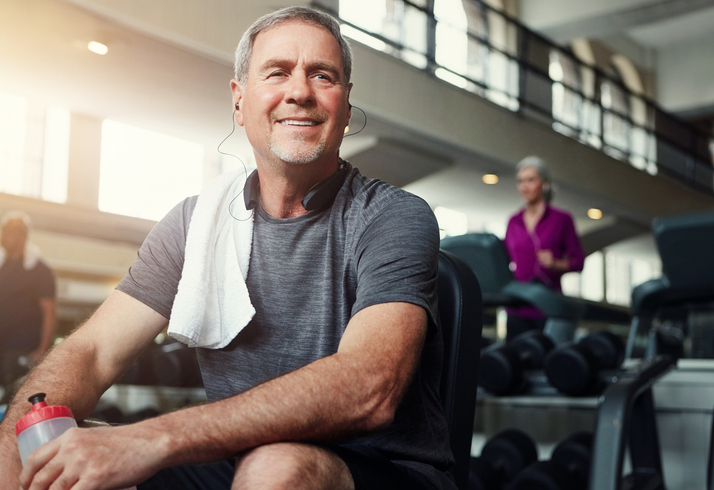By Angela Kneale OTD, MA, OTR/L, NBC-HWC
We see resilience in the natural world all around us – the tree that continues to reach toward the sky despite being scarred by lightning, the tall sunflower growing from a crack in the concrete, and the spring crocus blooming from beneath the snow after a harsh winter.
As in nature, all people face challenges of physical and environmental adversities. We also encounter the inevitable psychological setbacks and inequities of life – devastating traumas, economic crises, emotional hardships, interpersonal difficulties, and significant stresses. The good news is that each of us has inherent capabilities for recovery.
In his book, Aging Well, Harvard University psychologist George Valliant describes the resilient person as resembling “a twig with a fresh, green living core. When twisted out of shape, such a twig bends, but it does not break; instead, it springs back and continues growing.” Our mistakes and failures are ideally understood as intrinsic, healthy, normal and necessary parts of being human. Resilience allows us to recover, persist, flourish and thrive.
What if nurturing one’s self and boosting resilience were as accessible and enjoyable as spending a few minutes lying and playfully rolling on a cylinder-shaped piece of foam? Addressing physical resilience in fun, motivational ways also influences other dimensions of wellbeing – including our cognitive, emotional, and spiritual resilience, which are essential for wholeness and health. Awareness is a critical first step – noticing our state of being, and then consistently practicing self-care and self-nurturing activities to enhance wellbeing.
Foam rollers are basic tools that invite playful exploration – helping us notice capabilities and imbalances, observe alignment and posture habits, experience core support, and connect body and mind. Spontaneous rolling and releasing restores and creates healthful, efficient, balanced and joyful movement and presence.
Made from materials once used only for packing and shipping, foam rollers are now available in many sizes and densities. And foam rollers have increasingly made their way into rehabilitation clinics, athletic training facilities, workout gyms and wellness centers. In The Exercise Cure, Dr. Jordan D. Metzl advises: “If you only buy one piece of exercise equipment for the rest of your life, make it a foam roller. It’s so simple and so brilliant.”
Here are a few movements selected from the book, Rolling for Resilience, to begin exploring mind-body exercise that integrates positive experiences, mindfulness, focused breathing, core strength, flexibility, balance, connection and alignment. Remember to breathe deeply and fully, releasing tightness and tension during every exhalation. Choose the amount of pressure that feels best for you, while staying mindful of your body posture and positioning.
 Centering
Centering


Try combining Rolling for Resilience movements with your regular exercise workouts. Rolling prior to exercise relieves body tension and muscle imbalances, and promotes exercise that more effectively trains the body for balanced strength and flexibility. Roll after your workout to decrease muscle soreness and help prevent problems or injuries. Roll at the end of your workday to relieve the stress and tension from tightened or overused muscles.
Listen to your body – you are the best expert regarding what you feel and experience. Roll each region for a minute or two with slow, controlled movements. Explore a variety of angles and amounts of pressure. Imagine tight muscles and connective tissues softening and lengthening – like butter melting or taffy pulling. Focusing on exhaling completely will encourage release of body tension and maximize the benefits of rolling.
This 3-hour experiential workshop explores the best foam roller techniques for self-massage, body alignment and core strengthening. Posture awareness exercises and dynamic movements on the roller help you connect with your body’s resilience and your capacity to thrive.
Each participant will receive a Star Roller and Rolling for Resilience instructional book to take home after the workshop. Click here to learn more about Rolling for Resilience.
As the new year begins, many of us set fitness goals that require finding the right gym. Choosing the right facility can significantly impact your motivation and progress. Here are five essential factors to consider before signing up.

Aromatherapy, the practice of using essential oils extracted from plants for therapeutic purposes, has been a cornerstone of holistic health for centuries. Rooted in ancient traditions, it has grown in popularity in modern times due to its ability to promote relaxation, alleviate stress, and improve overall well-being. This article explores ...
READ MORERadical acceptance is the practice of fully accepting reality without judgment or resistance. It is not about approving harmful situations or giving up but rather letting go of the internal struggle against reality. This transformative approach can reduce emotional suffering and foster inner peace. Explore the concept of radical acceptance ...
READ MORE